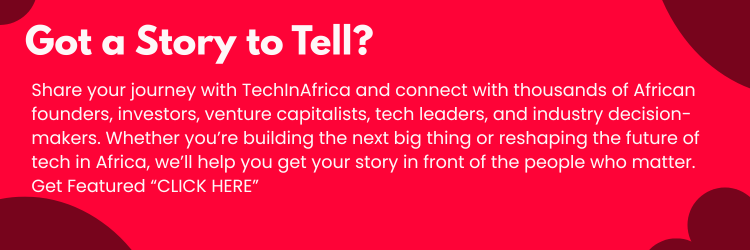In 2024, Sub-Saharan Africa received $56 billion in remittances. Yet, the distribution of fintech innovation across the continent tells a paradoxical story: countries most dependent on remittances receive the least startup attention.
According to Intelpoint.co , The Gambia depends on remittances for over 21% of its GDP. Lesotho and Comoros also sit near the top of the list, with remittances making up around 20% of their economies. These are among the highest remittance-to-GDP ratios globally.
Yet, while well-funded startups like LemFi (processing over $1 billion monthly with $53 million in recent funding), NALA , Flutterwave, and Chipper Cash compete aggressively for the Nigeria-Kenya-South Africa corridor, The Gambia, Lesotho, and Comoros remain largely unserved by digital remittance platforms.
For founders and investors evaluating the remittance space, this raises a critical question: Is this an overlooked opportunity, or a rational market response to unfavorable economics?
The Unit Economics Problem
The remittance industry’s focus on high-volume corridors isn’t arbitrary—it’s driven by fundamental unit economics.
Transaction volume determines viability
While The Gambia’s $776 million in annual remittances represents a lifeline for its economy, it pales compared to Nigeria’s estimated $20+ billion or Kenya’s $4+ billion. When your business model depends on processing volume at thin margins, absolute market size matters more than percentage of GDP.
Regulatory costs don’t scale down
Remittance companies operating across Africa need approximately 50 different licenses across 15 territories, each requiring distinct identity verification systems. Whether you’re moving $1 billion or $100 million, these fixed costs remain constant. For smaller markets, regulatory overhead as a percentage of revenue becomes prohibitive.
Fees remain stubbornly high
Sending money to Sub-Saharan Africa costs an average of 2 percentage points more than the global average. In smaller markets with less competition and infrastructure, these costs are even higher. Startups attempting to compete on price in low-volume markets face a profitability trap.
The digital remittance market in the Middle East and Africa is projected to reach $4.6 billion by 2030, growing at a 17.4% CAGR. But this growth concentrates in established corridors where infrastructure, mobile money penetration, and transaction volume create sustainable economics.
Why Infrastructure Matters More Than You Think
The infrastructure gap isn’t just about missing rails—it’s about operational complexity and risk.
Mobile money penetration varies dramatically
Kenya’s M‑Pesa provides a blueprint for how mobile money can anchor remittance services. But in markets like The Gambia and Comoros, mobile money adoption remains lower, requiring costlier cash-out networks and agent management.
Currency and settlement risk
Smaller markets often have less liquid currency markets, higher volatility, and fewer settlement partners. This translates to higher working capital requirements and forex risk management costs.
Last-mile distribution
In countries without robust digital payment infrastructure, remittance companies must invest heavily in agent networks, cash management systems, and compliance monitoring—fixed costs that only make sense at scale.
Lesotho has shown improvement in financial inclusion and mobile money uptake over the past decade, but the question for startups isn’t whether infrastructure exists—it’s whether it’s sufficient to support profitable operations at current transaction volumes.
The Competitive Landscape: High Barriers to Entry
New entrants face formidable competition from well-capitalized incumbents who’ve already absorbed the high cost of market entry.
Established players dominate distribution
Companies like Mukuru, Remitly, WorldRemit, and regional champions have spent years building payout networks, negotiating bank partnerships, and establishing regulatory compliance. They can add corridors incrementally at a lower marginal cost than a new entrant can establish their first.
Network effects favor scale
As platforms grow, they can offer better rates, faster settlement, and more payout options—reinforcing their advantage. Breaking into an established corridor requires substantial capital to subsidize competitive rates until sufficient volume is achieved.
Aggregation plays are challenging
Some startups attempt to aggregate smaller corridors to achieve viable scale, but this multiplies regulatory complexity and operational overhead while diluting focus.
Despite these challenges, high-dependency, lower-volume markets present specific opportunities for founders willing to build differently:
1. Beyond Transfers: Embedded Financial Services
Rather than competing purely on remittance fees, successful plays in smaller markets may bundle transfers with higher-margin financial services:
- Savings and investment products that allow diaspora to build assets in home countries
- Micro-lending secured against regular remittance flows
- Bill payment and merchant services that monetize the last-mile relationship
- Diaspora investment platforms that channel remittances into local businesses or real estate
The high remittance dependency indicates deep diaspora-home country connections—an audience potentially interested in broader financial engagement beyond simple money transfer.
2. Corridor-Specific Solutions
Rather than building pan-African platforms, focus on specific high-value corridors:
- US/UK to The Gambia where diaspora communities are concentrated and well-organized
- South Africa to Lesotho where geographic proximity and existing trade relationships reduce certain operational complexities
Deep specialization in one corridor allows for optimized compliance, better community partnerships, and targeted product development.
3. B2B Infrastructure Plays
Instead of consumer-facing remittance apps, consider:
- Payout-as-a-service for larger remittance companies wanting to expand coverage without direct investment
- Compliance and KYC infrastructure that reduces regulatory costs for multiple players
- Settlement and treasury optimization tools for companies managing multi-currency operations
These B2B models can achieve viability at lower transaction volumes while serving multiple clients.
4. Strategic Partnerships Over Pure-Play Startups
Given the infrastructure challenges, partnerships with existing institutions may be more viable than standalone startups:
- Mobile network operators with existing agent networks and customer relationships
- Traditional banks seeking digital transformation and diaspora customer acquisition
- Regional development institutions with mandates for financial inclusion
The future of remittances in high-dependency countries is bright—but it will be built by those who solve the economic problem, not just the technology problem.
Who will step up with the right business model?






